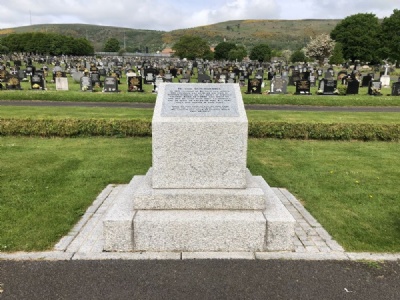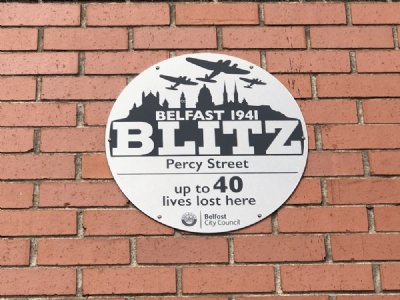Belfast Blitz
Starting in early September 1940, the German air force (Luftwaffe) began carrying out regular air raids of British cities. In addition to industrial and military targets, residential areas were also bombed as part of trying to force British government into peace negotiations. Initially, London was the main target, but later in that year it expanded to include cities such as Coventry, Liverpool, Glasgow, Southampton, Bristol and others.
Belfast in Northern Ireland was considered to be outside the reach of the Germans and thus had a weaker anti-aircraft defense. Industrially, the city was a potential target because its war-producing industries, such as Harland and Wolff, which is best known for having built the Titanic about 30 years earlier. Belfast was during the peak off the Blitz in the autumn 1940 spared, but that changed in April 1941.
On the night between 7 and 8 April, 1941, the city’s port area was subjected to a minor attack and it is believed that the Germans partly wanted to test the city’s anti-aircraft defense. The number of victims was not more than a dozen. The next attack took place April 15, when about 200 German bombers attacked industrial and military targets around the city. This time the material damages were much more extensive and the number of deaths amounted about 900. The last two attacks was carried out two nights in a row, May 4-6. The number of victims during the last two attacks amounted about 150 people. In total, about 1,200 people died during all four attacks.
Current status: Monument (2023).
Address: Hogarth Street, Belfast, BT15 3AS.
Get there: Car.
Follow up in books: Holland, James: The Battle of Britain: Five Months That Changed History; May-October 1940 (2011).





There seem to be no monuments dedicated to the victims of the Blitz, however, there are small information tablets on each house hit in the raid and how many died during the attack at that particular house. There are also a couple of impressive murals dedicated to the Blitz. Those who died during the bombings were buried in mass graves in three cemeteries in Belfast.